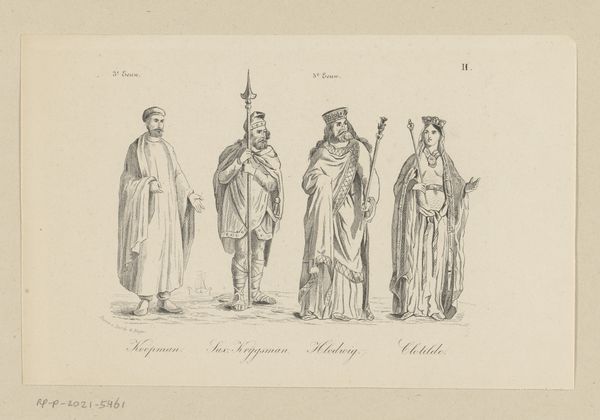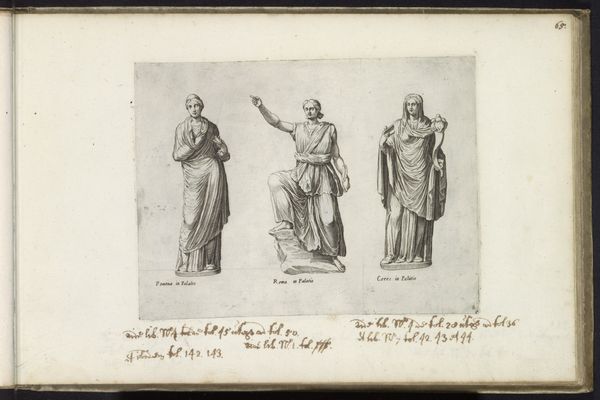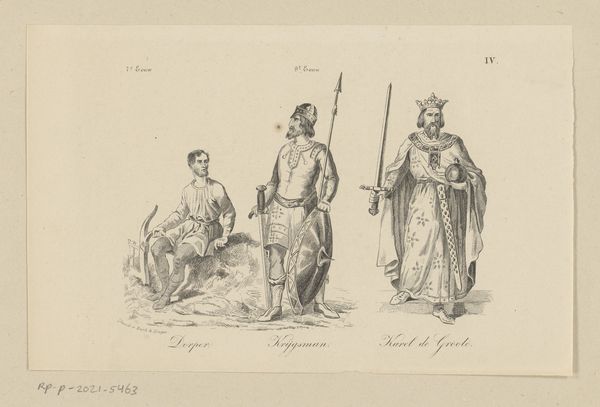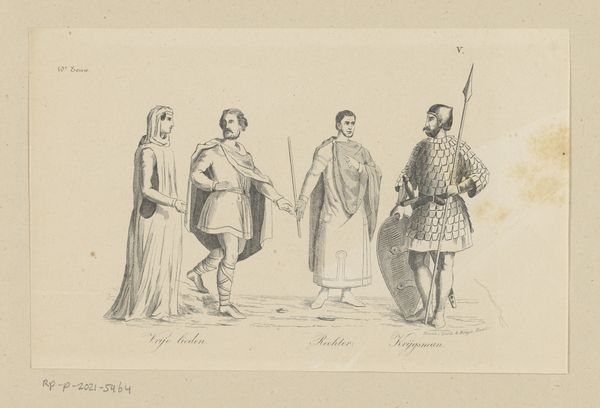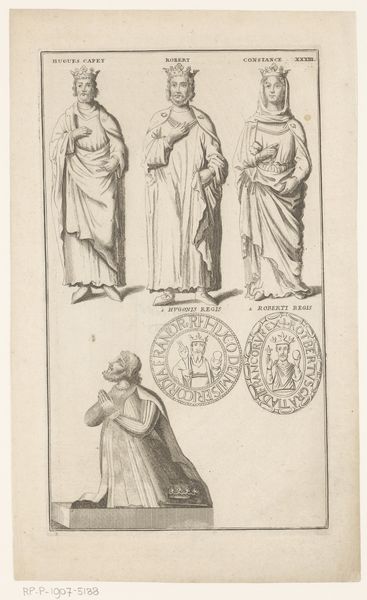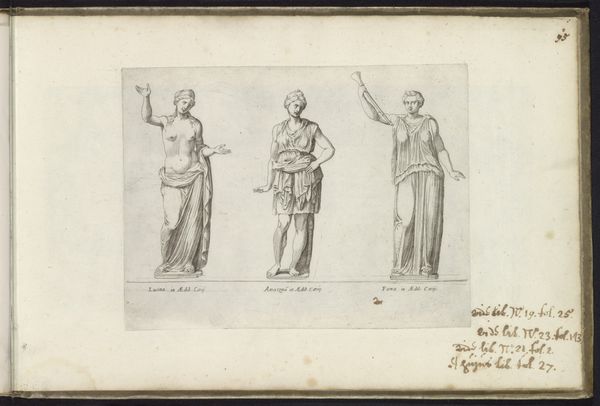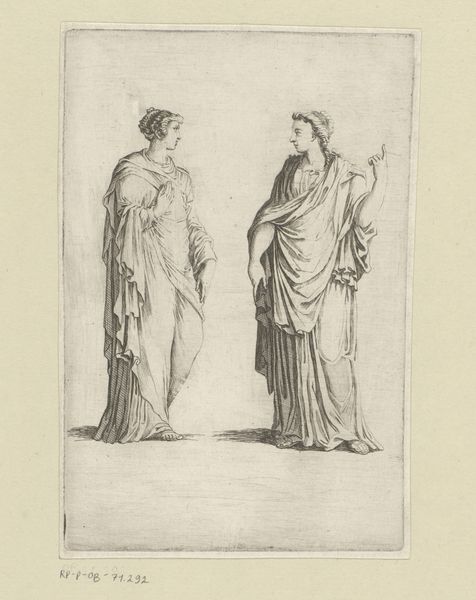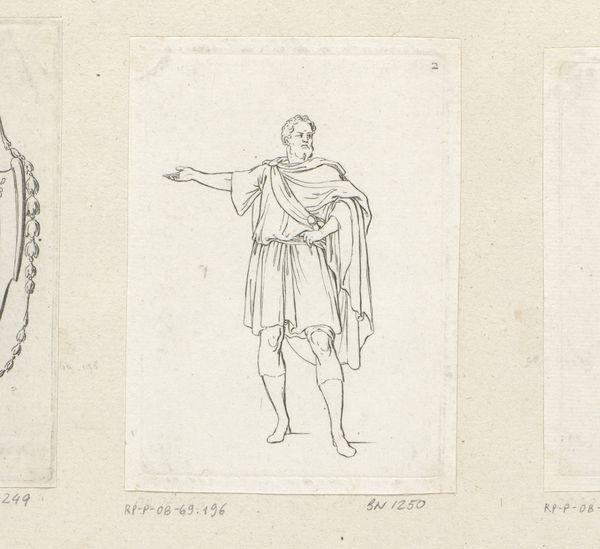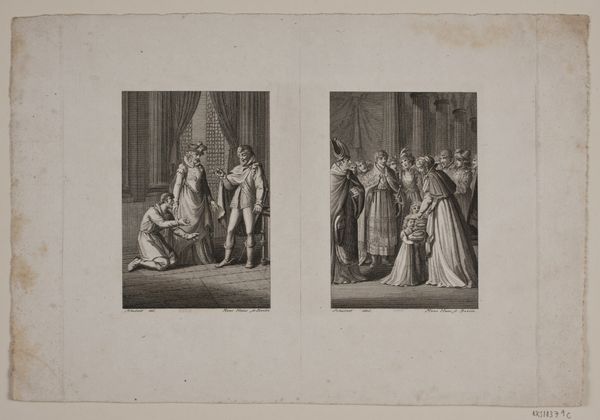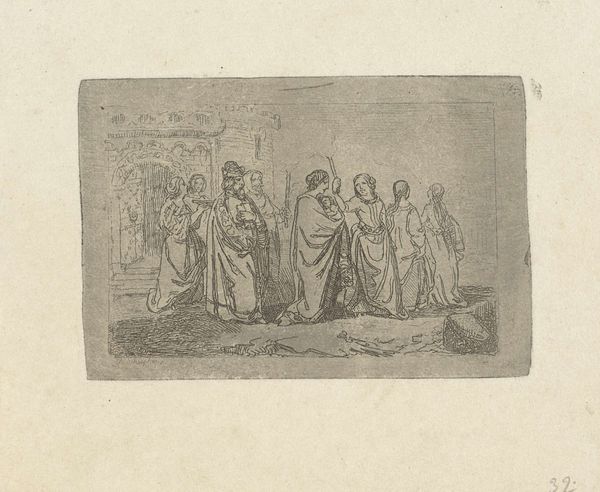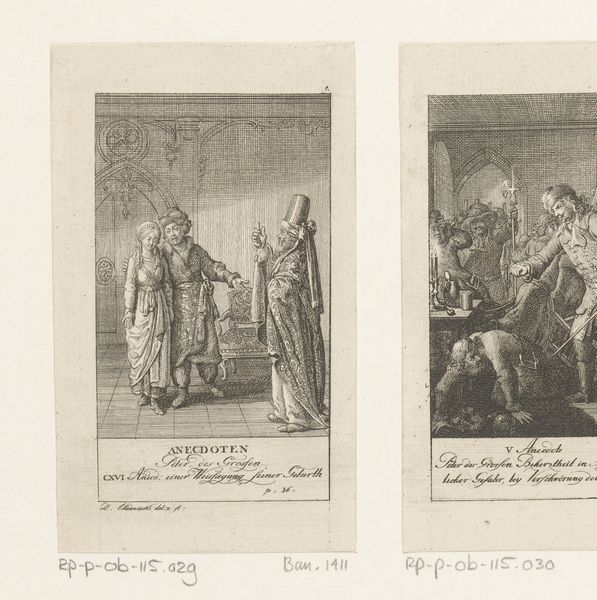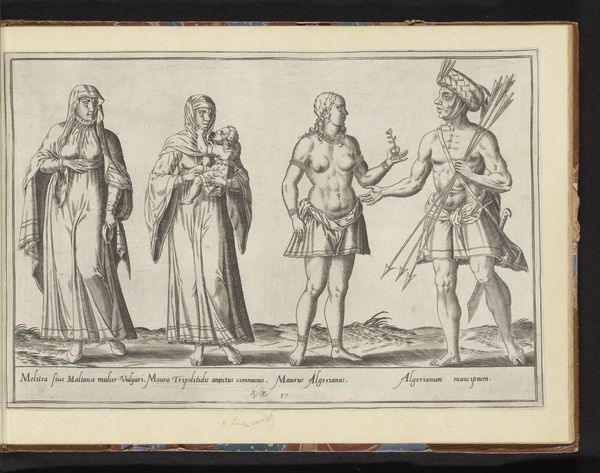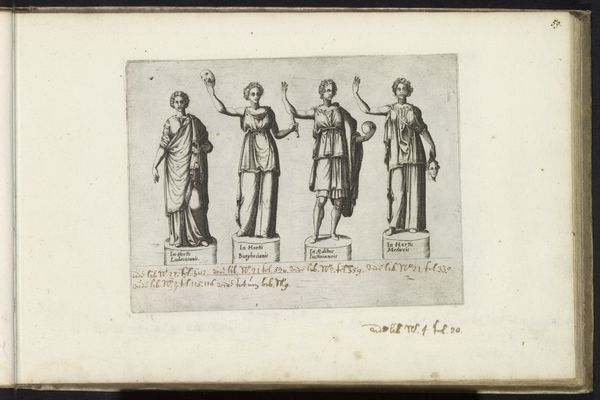
Edelvrouw, Dirk II en Hildegard van Vlaanderen in kleding uit de tiende eeuw 1857
0:00
0:00
drawing, pen
#
portrait
#
drawing
#
medieval
#
pencil sketch
#
figuration
#
costume
#
pen
#
history-painting
Dimensions: height 150 mm, width 236 mm
Copyright: Rijks Museum: Open Domain
Editor: This drawing from 1857 depicts “Edelvrouw, Dirk II en Hildegard van Vlaanderen in kleding uit de tiende eeuw” using pen and pencil. It has a very stark and documentary feel to it. What jumps out to you? Curator: Well, the means of production are interesting, aren't they? This isn’t some grand oil painting meant for a palace wall. We have a humble drawing, readily reproducible. It points to a growing market for historical knowledge and a democratisation of access to images of power. Who was the intended audience? How was this drawing distributed? Editor: That's interesting! I was just focused on the clothing. So, you’re thinking less about the historical figures themselves and more about… who made this drawing and for whom? Curator: Precisely. Look at the starkness. It suggests functionality over aesthetic concerns. Was it meant to circulate amongst historians? Costume designers? The drawing's purpose shapes its very form. This reveals the social and economic forces behind its creation. Do we know where it was published? Editor: It is currently housed at the Rijksmuseum, which probably wasn't the intent at the time. What do you make of its connection to Medieval art? Curator: The "Medieval" tag is interesting, but misleading. This is a 19th-century *interpretation* of the Medieval, filtered through Victorian sensibilities and perhaps romantic notions of the past. The artist chose to depict these figures - what motivated them to focus on the 10th Century and make it accessible through inexpensive drawings? Consider this not as an object *from* the Medieval period, but *about* it – made within a specific historical and material context. It opens up further questions about production. Editor: I hadn’t considered the layers of interpretation involved. Thanks, this really changes how I see the image and its context. Curator: It's a fascinating reminder that even the simplest drawing can reveal a great deal about the world in which it was made and circulated. It serves as historical record not of tenth century clothing only, but the social drive toward popular historicism in the nineteenth.
Comments
No comments
Be the first to comment and join the conversation on the ultimate creative platform.
